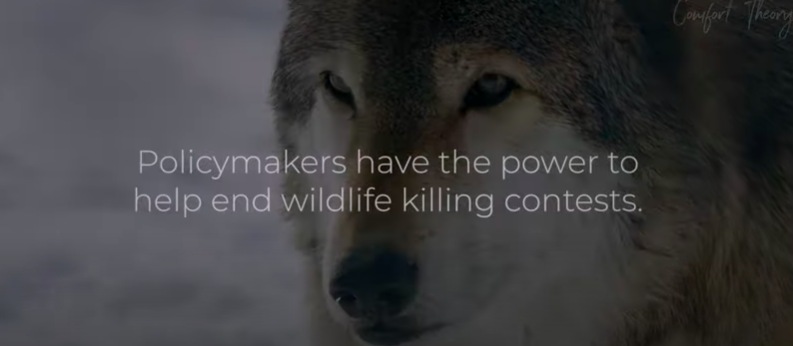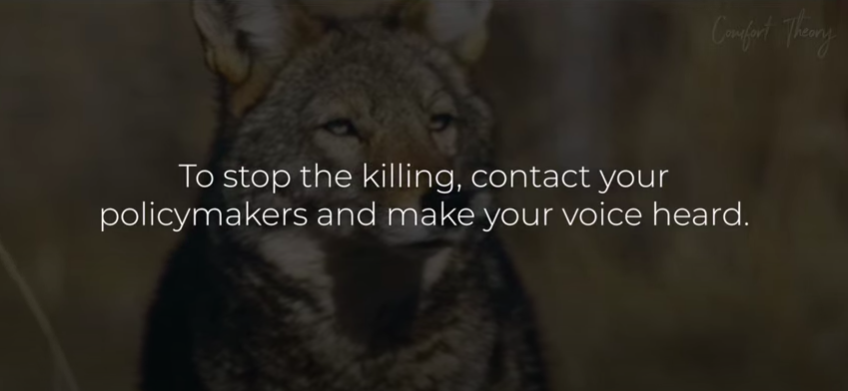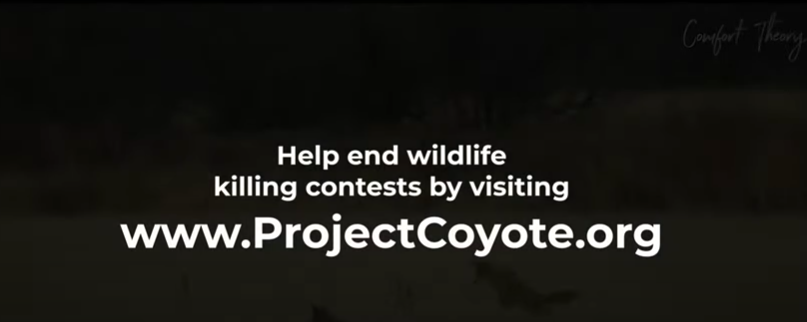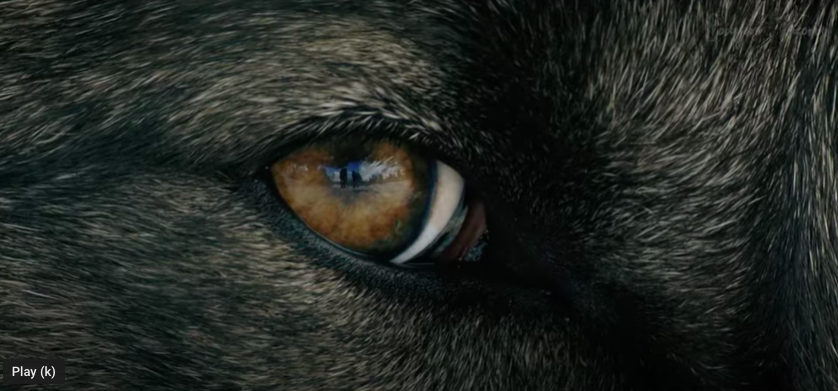WILDLIFE KILLING CONTESTS
(This is Not Wyoming’s Finest Hour)
by Kristin Combs
Ask any person on the street what a wildlife killing contest (WKC) is and they will likely tell you they’ve never heard of one. However, many of these horrific events where people compete to win prizes and cash by killing the most they can of a species are held annually in Wyoming. Now banned or limited in seven states – with other states soon to follow – WKCs have increased in popularity over the last 10 years as high payouts of thousands of dollars are often given to the winners.
Wyoming is home to several of these contests including the ‘Wyoming Best of the Best’ and several other privately run contests. The Wyoming Best of the Best is a circuit of contests that draws people from around the region to come to Wyoming to primarily kill coyotes and foxes. Participants pay an entrance fee and then build points in monthly events that span from December through February. There is a state championship held in early November in Rock Springs. Locations of the qualifying events are in Kemmerer, Casper, Cheyenne, Lovell, Riverton, Rock Springs, and Newcastle. So, no matter where you live across the state, there’s likely a WKC happening nearby your community.
Wildlife Killing Contests happen in secrecy because participants are wantonly slaughtering native wildlife for no purpose other than to kill so there has been an effort to keep them out of the public eye. The reason for this is that people are horrified to discover that beloved native wildlife species are gunned down with pups left orphaned to starve to death so someone can win a belt buckle. The official rules for the event require all coyotes to be out of sight up to the six-foot height of a pile or covered with a tarp and any videos taken not be used for Facebook or shared with the public. The rules also state that top placing teams may be submitted to a lie detection test to ensure rules were followed. Wyoming Best of the Best clearly states that they will not be held liable for any accidents, injuries, or deaths that might occur. This directly questions not only the integrity of the people involved in these contests but also the safety of having children participate.
Probably one of the most egregious factors about wildlife killing contests in Wyoming is that wolves can be killed during the event. Wolves are listed as trophy game animals in the northwest corner of the state where there is a hunting season and limits on the number of animals that can be killed. However, they are considered a predator in the remaining 85% of the state which means they can be killed at any time by any means with no oversight or hunting tag needed. Other animals listed as predators are coyotes, red fox, jackrabbits, porcupines, raccoons, skunks, and stray cats. These animals are excluded from ethical guidelines that govern the hunting of other species like elk and deer. In fact, they do not even fall under the Wyoming Game and Fish Department but are managed by the Wyoming Department of Agriculture.
Participants and proponents of these contests claim that they are providing a community service by killing coyotes and other animals in order to protect deer and elk and to prevent livestock losses. They also claim they are making people and pets safer from attacks. They will tell you that these animals must be “controlled” and without killing contests, the countryside would be overflowing with predators. Below, we delve into these myths and explain why those arguments have no merit.
Myths and Facts
Myth: Killing contests reduce livestock conflicts.
Fact: Killing carnivores, especially a stable breeding pair with no history of livestock depredation, can actually increase livestock conflicts as younger, more inexperienced individuals move into an area. Leaving a gap in the ecosystem leaves resources available for additional animals to use. If a resource remains available, animals will continue to seek out these areas.
If there are depredating carnivores in an area, hazing those animals away or using other deterrents is more effective than lethal removal. And even more effective is the use of preventative methods that keep conflicts from occurring in the first place.
Myth: Killing contests keep people and pets safe from attacks.
Fact: Coyotes, wolves, and foxes that are targeted in killing contests are of very little threat to human safety. We often hear wildlife killing contest participants fearmongering by saying that coyotes will be attacking kids at bus stops and playgrounds if they aren’t “controlled.” Neither coyotes nor wolves are looking to attack humans. They don’t consider us prey and attacks are extremely rare and almost always involve an animal that has been habituated to food or is ill. Only a handful of people have been attacked and/or killed by coyotes or wolves in the past 100 years. In comparison, twenty-two people a year are killed by cows in the U.S. Randomly killing wildlife doesn’t do anything to improve safety of people.
Small dogs and cats are sometimes killed by coyotes and wolves but are not a regular source of prey. Neither of these species lure dogs just to kill them and are often only defending their den or territory against an intruder. It is the responsibility of people to keep their pets safe. Unattended pets can certainly be killed by coyotes or wolves but are unlikely to if under the watchful eye of their owner.
Myth: Killing contests are a useful tool for wildlife management.
Fact: With no limits, no regulations, and no purpose, WKCs are not a necessary component of wildlife management. Most carnivores are self-regulating meaning that they control their own populations through social constructs and population dynamics that coincide with co-evolution with their prey. Coyotes are compensatory breeders meaning that the fewer coyotes in an area, the larger the litter sizes. Coyotes howl and sing to communicate with each other and to determine how many coyotes are present in an area. If it is determined that not many others are occupying an area, females will have more young. Therefore, killing coyotes only leads to more coyotes in the future. As for wolves, killing wolves breaks up packs and social structure and usually leads to smaller, additional packs. This can lead to depredation on livestock as it is more difficult to hunt elk with fewer pack members.
Myth: Wildlife killing contests save deer and elk.
Fact: The number one factor of deer and elk survival is habitat availability and forage quality. Deer and elk are dependent on having plenty of resources available in the form of land and high-quality food. Wildlife biologists have studied the effect of lethally removing coyotes and wolves and determined that it has little effect on either deer or elk populations. There are more elk present in Wyoming than before wolves were reintroduced. Coyotes eat mostly mice, ground squirrels, rabbits, and vegetation and will opportunistically eat fawns if they get the chance, however it isn’t a staple food source.
Wildlife is held in the public trust by our wildlife managers. They should be managed for all Wyoming residents. A miniscule number of people are involved in WKCs, meanwhile wildlife watchers and ethical hunters are left with virtually no voice in the management of animals classified as predators. All of these animals serve a valuable purpose in the ecosystem and don’t deserve to be randomly gunned down while just trying to raise their young and live out their lives.
A new film about wildlife killing contests has been recently released by Comfort Theory and Project Coyote. Watch the film (Warning-graphic material). Visit the Project Coyote website to sign a petition to get wildlife killing contests banned on public lands. Wyoming Wildlife Advocates will be featuring a billboard in Cody this year to educate visitors about WKCs and how they can help get them banned by signing the petition and contacting their congressional legislators. There is a matching fund up to $2,000 for the billboard. To contribute, visit our website at www.wyowild.org and click the donate button at the top of the page.
Kristin Combs is the Executive Director for Wyoming Wildlife Advocates. She holds a bachelor’s degree in Environmental Science, a master’s degree in Education, and a master’s degree in Science Education. She has been studying and teaching others about biology and wildlife issues for over 15 years and directly advocating for Wyoming’s wildlife for five years.








